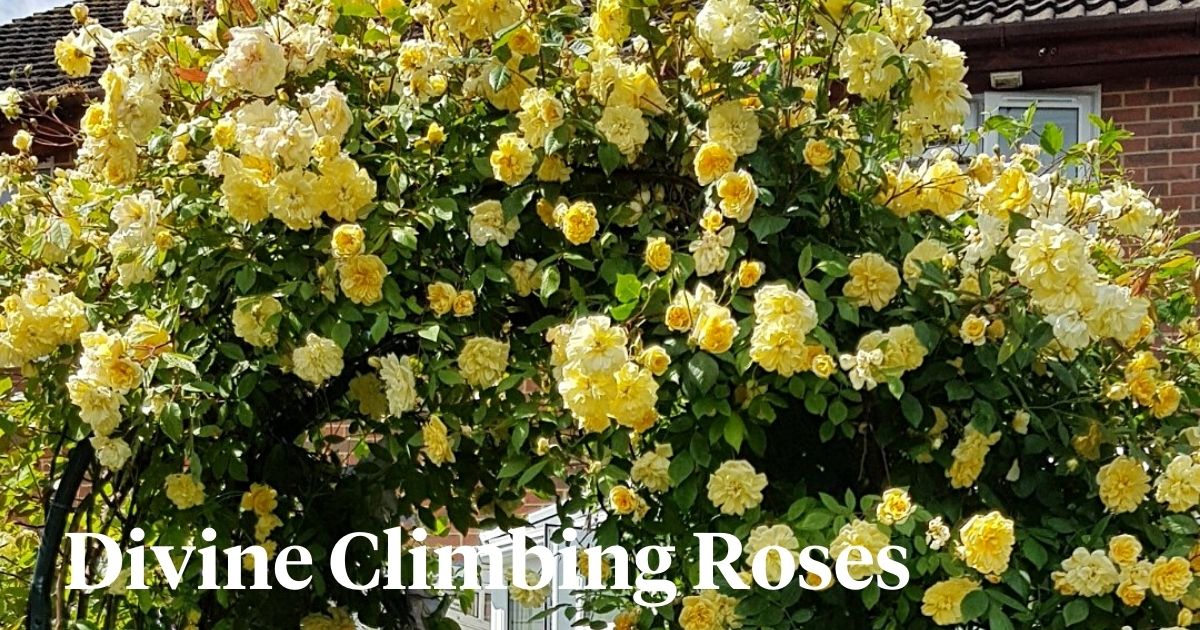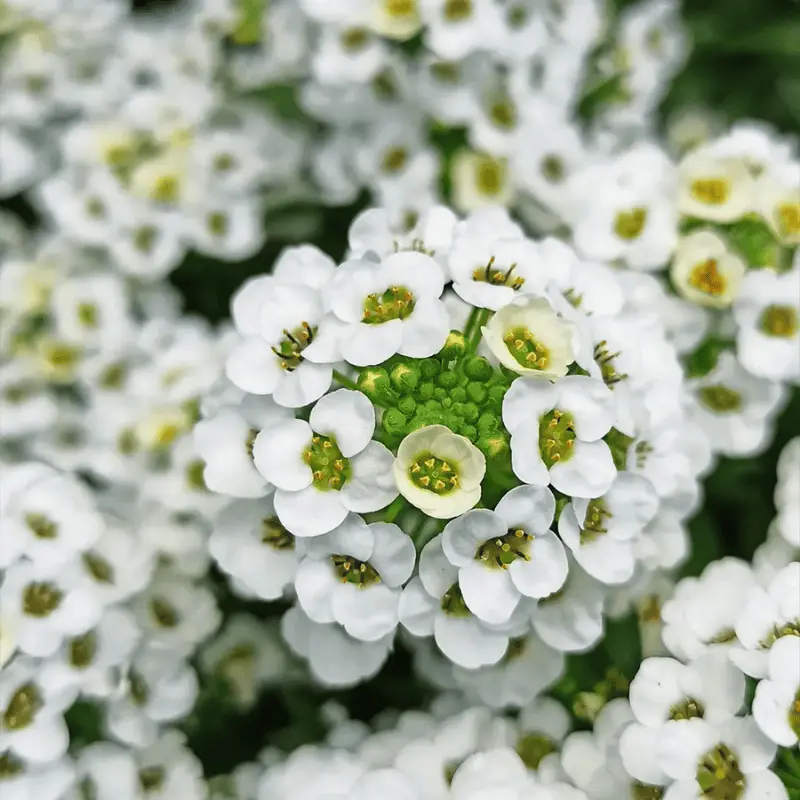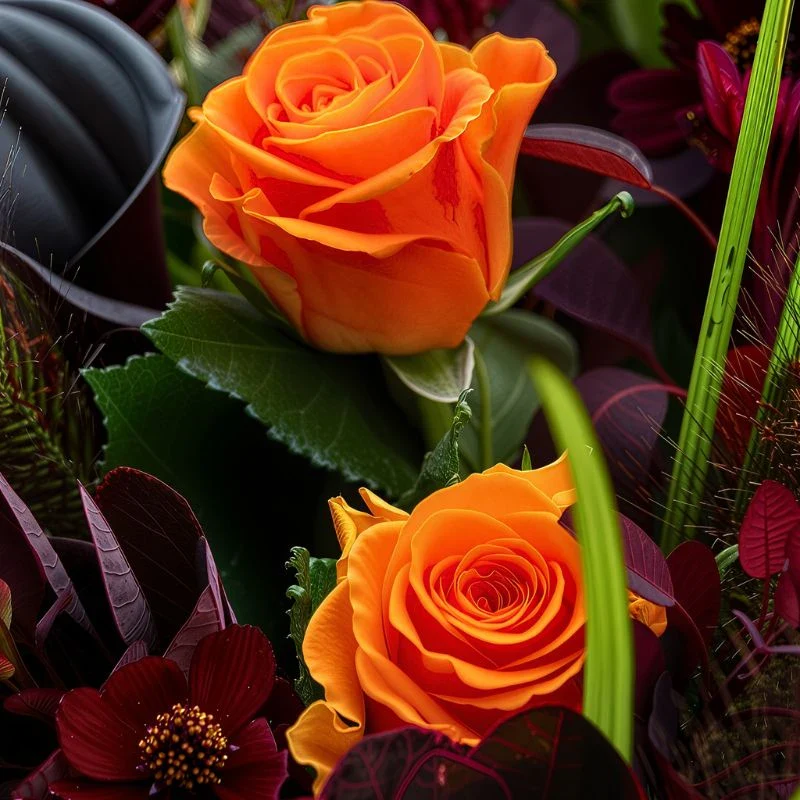What does a garden full of colorful climbing rose bushes sound like? Imagine stepping into your garden every day and having the dreamiest spaces filled up with some of the world's most stunning climbing roses. Here's a compilation of eight of the best and most stunning climbing rose favorites that are invading gardens all over the world.
The 8 Best Climbing Roses
We hope you're as much rose lovers as we are because things are about to get bloomingly beautiful with a special edition of eight climbing roses you should have in your garden. Climbing roses serve a functional purpose and add color, texture, and overall aesthetics to a landscape.
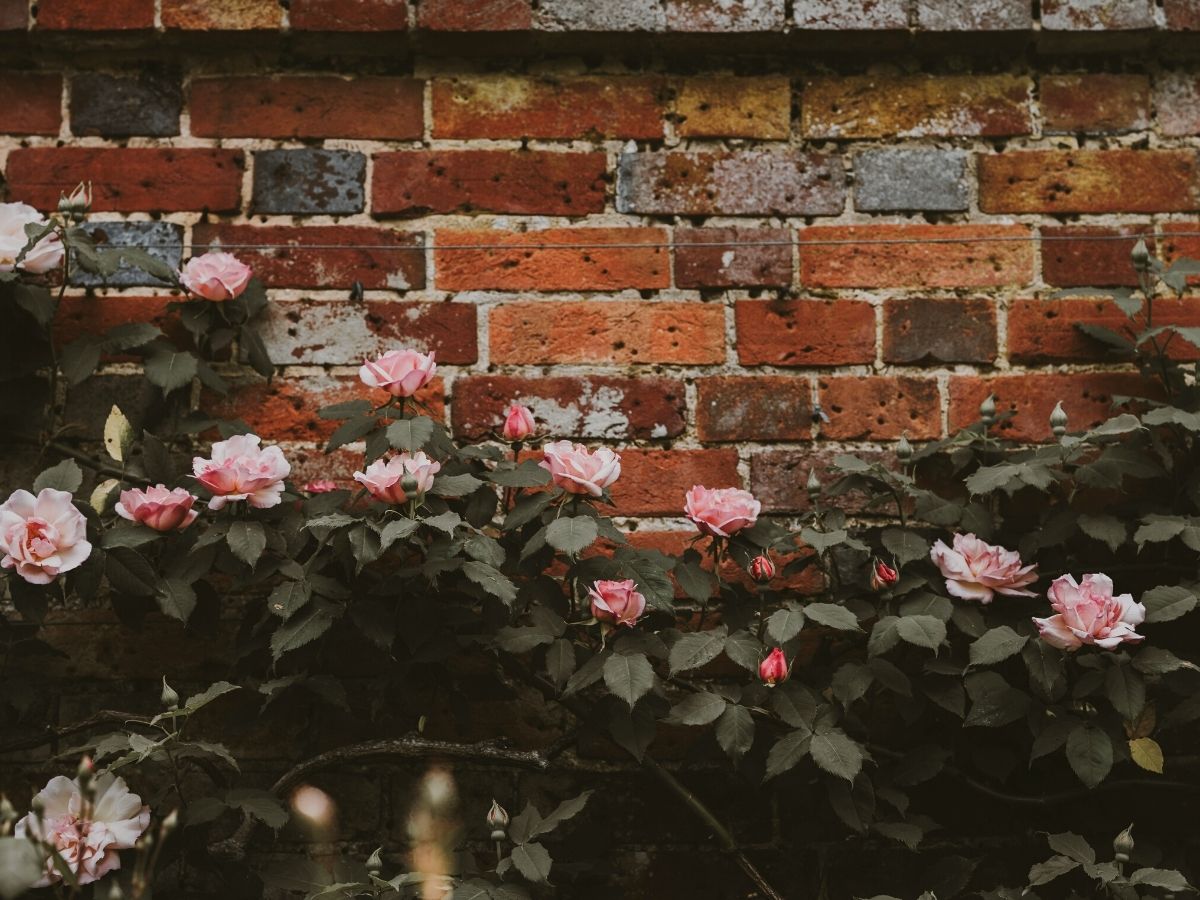
These stunners are a type of rose plant that can grow upright and climb, rather than just bush out like a standard rose. A climbing rose has long stems that can be trained to grow upwards and can be secured to structures like trellises, walls, and fences with ties or clips. Warning: you'll want to have all of these eight climbing roses coming up!
Eden Climbing Rose
The Eden climbing rose, also known as 'Pierre de Ronsard', is one of the most beloved and popular climbing roses available today. There are several reasons why the Eden climbing rose is considered one of the best climbing roses out there.
To start with, the Eden climbing rose is incredibly hardy and disease-resistant, making it an ideal choice for gardeners who want a low-maintenance rose that will thrive in a variety of conditions. This rose can tolerate both heat and cold and is highly resistant to common rose diseases such as black spots and powdery mildew.
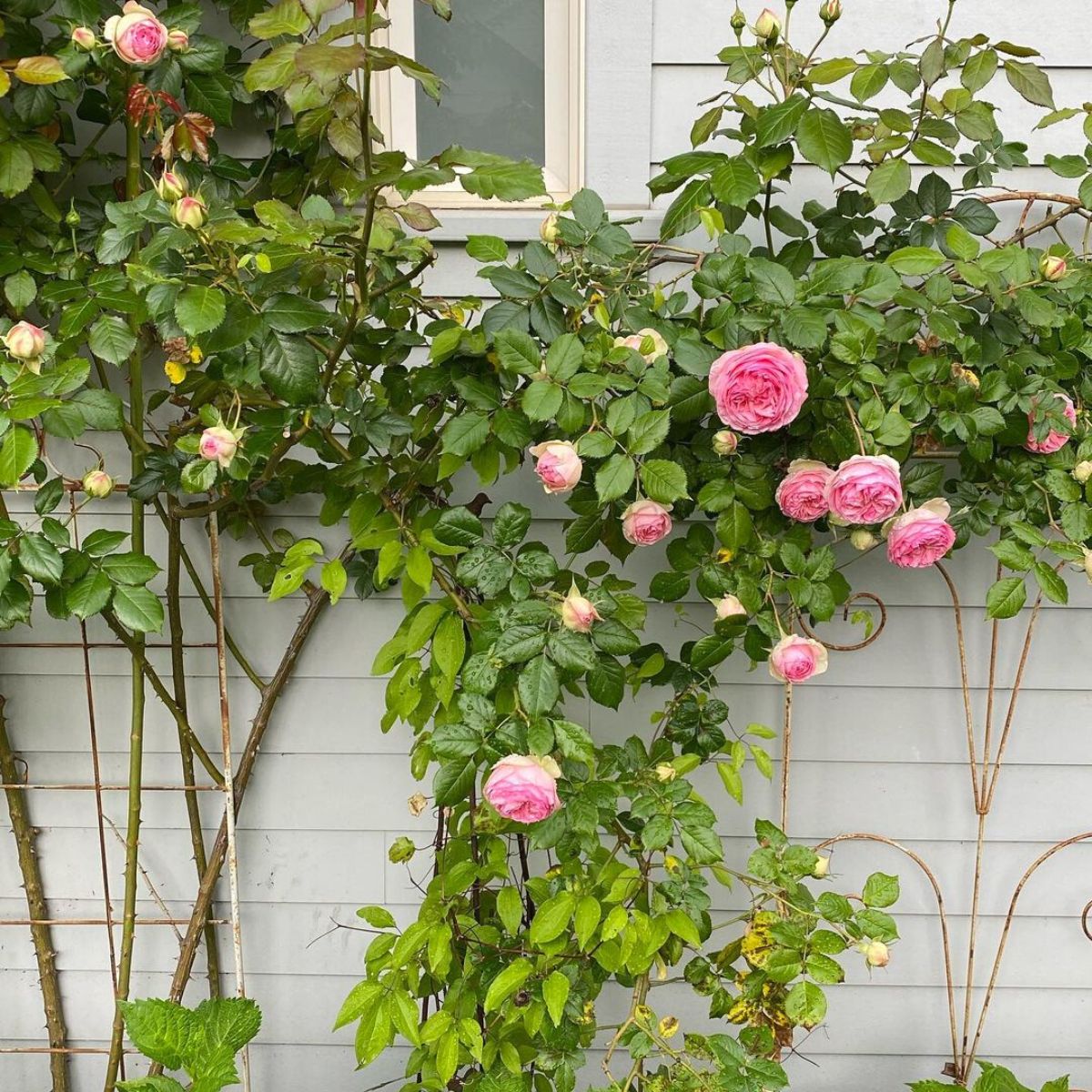
On the other hand, this climbing rose is prized for its large, full blooms, which are reminiscent of old-fashioned roses. The blooms are a soft, delicate pink with creamy white edges, and have a lovely, sweet fragrance that fills the air.
To finish off the love for the Eden climber rose, it's a vigorous grower, capable of reaching heights of up to 12 feet, making it an excellent choice for covering large trellises, fences, or walls.
New Dawn Climbing Rose
The New Dawn climbing rose is a popular and versatile rose that is loved by gardeners around the world. This climbing rose is a repeat bloomer, producing clusters of fragrant, pale pink blooms throughout the growing season. The flowers are semi-double, with a soft, delicate appearance that is perfect for creating a romantic, cottage-style garden.
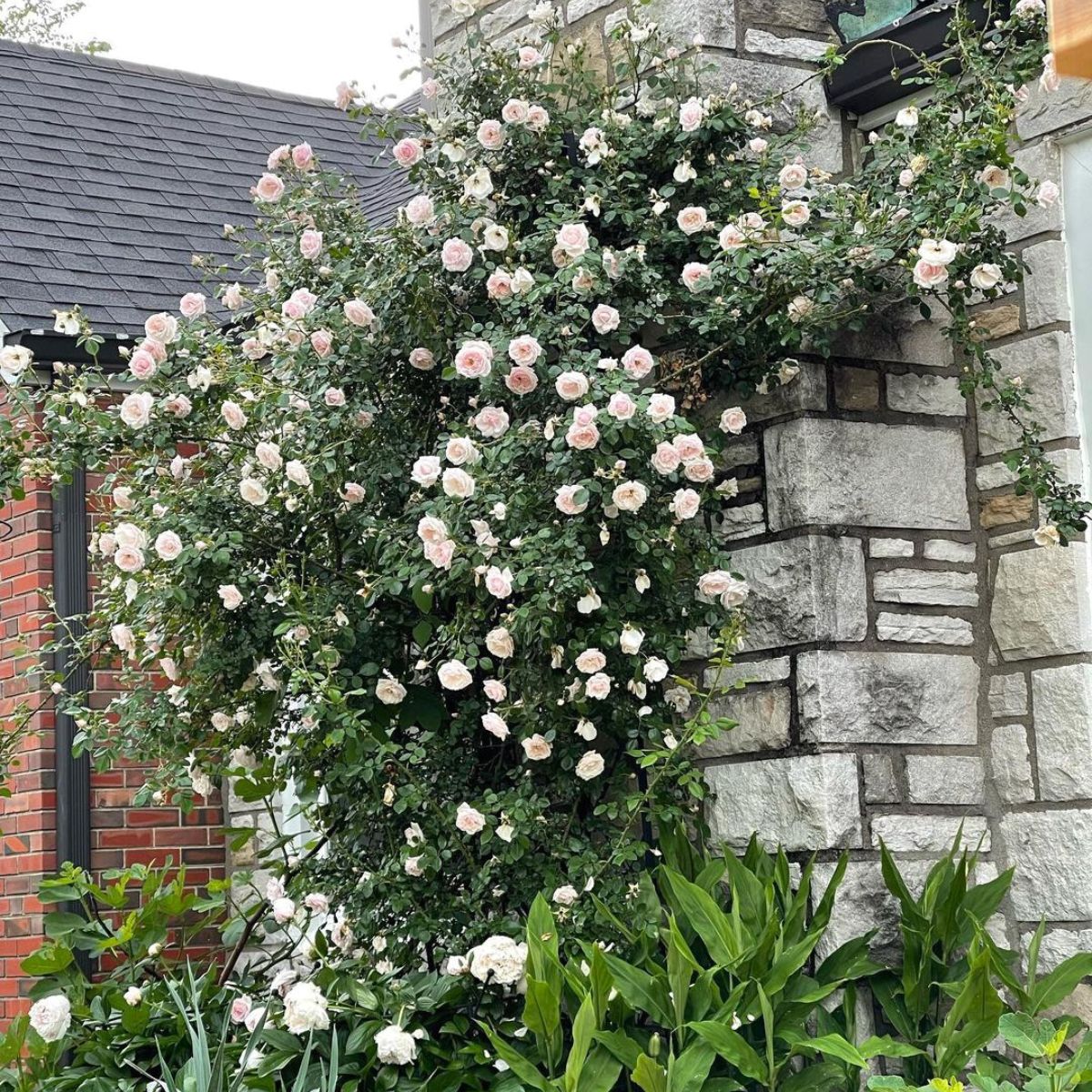
A vigorous grower that can reach heights of up to 20 feet, makes it a great climbing rose bush to have in your patio. It has strong, flexible canes that are easy to train and can be pruned to maintain the desired shape and size. The plant is also disease-resistant and hardy, making it an ideal choice for gardeners who want a low-maintenance rose that will thrive in a variety of conditions.
The New Dawn climber rose is versatile enough to be used in a range of garden styles, from traditional and formal to more contemporary and modern. It can be trained to grow up trellises, fences, or walls, creating a stunning vertical dimension to your outdoor garden.
Don Juan Climbing Rose
Following the list of eight of the best climbing roses out there is the Don Juan climbing rose. It is widely regarded as one of the best climbing roses, and for good reasons. This specific climbing rose bush is a prolific bloomer, producing large, velvety red blooms throughout the growing season. These blooms have a classic rose shape and a rich, deep color that is sure to make a statement in any garden.
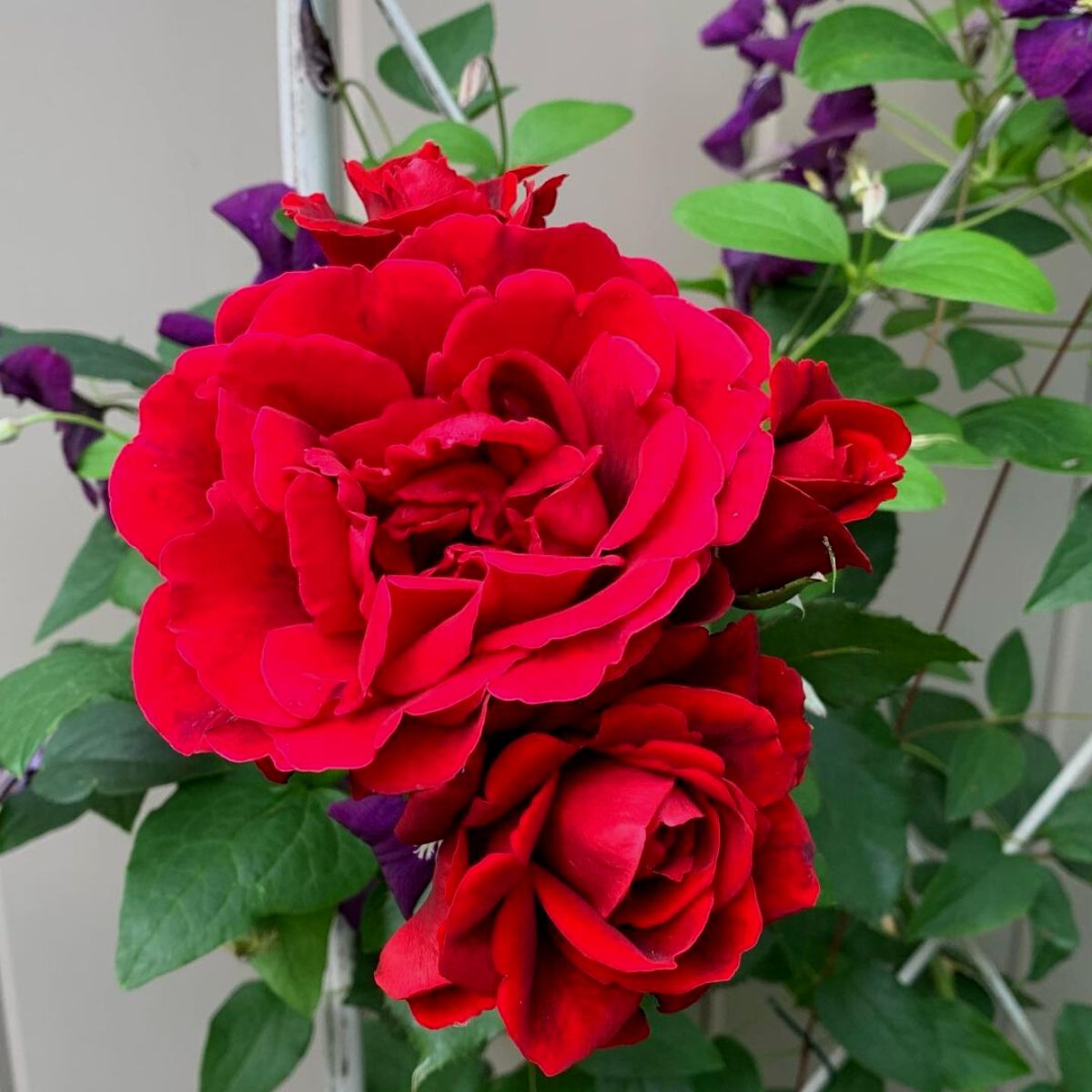
Additionally, the climbing Don Juan rose is a vigorous grower that can reach heights of up to 12 feet. It has strong, flexible canes that are easy to train and can be pruned to maintain the desired shape and size. This rose is perfect for covering large trellises, fences, or walls, creating a stunning vertical dimension to your garden as well as the climbing roses mentioned above and the majority of climbing rose varieties.
Joseph's Coat Climbing Rose
The Joseph's Coat climbing rose, also known as the 'Climbing Peace' rose, is a unique and striking rose that is prized for its multicolored blooms. The flowers of this rose feature a blend of vibrant shades of pink, orange, and yellow, giving the plant a kaleidoscopic appearance that is truly breathtaking. A fully bloomed Joseph's Coat climbing rose can be seen below!
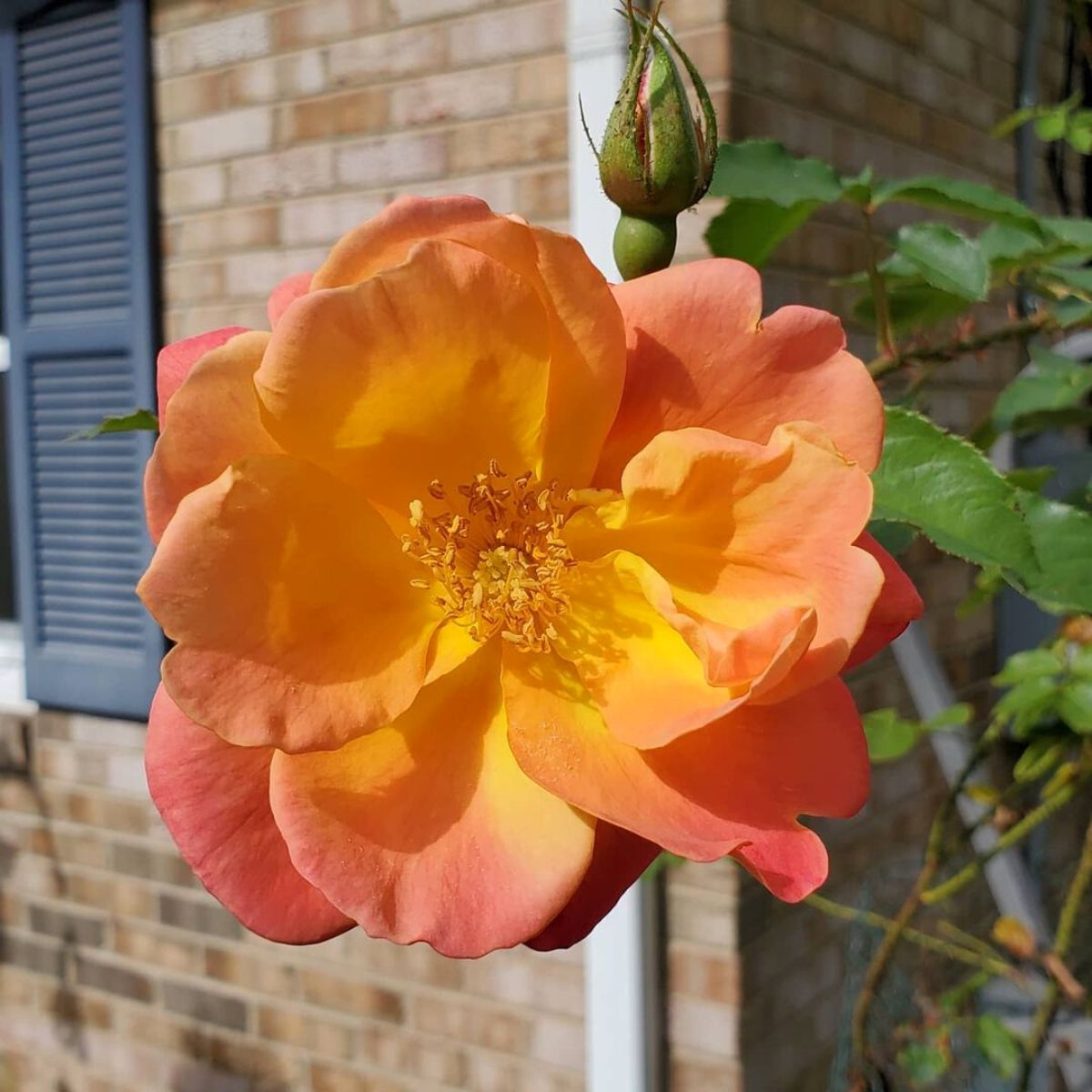
The blooms of the Joseph Coat climbing rose are large and full, with a classic rose shape and a delightful fragrance. The plant is a repeat bloomer, producing flowers throughout the growing season, ensuring that your garden will be filled with color and fragrance for many months of the year.
Once again, this climbing rose is yet another perfect option for covering trellises, fences, or walls, creating a stunning vertical dimension to your garden.
Peggy Martin Climbing Rose
The Peggy Martin climbing rose is a very special rose that has a unique and inspiring story. This rose was first introduced in the United States in the 1940s and was grown by Peggy Martin's grandparents in Louisiana. In 2005, Hurricane Katrina devastated the area, causing widespread damage and destruction. Peggy Martin lost almost everything in the hurricane, including her family home and all of her rose bushes. However, one rose bush managed to survive, and it was the Peggy Martin climbing rose.
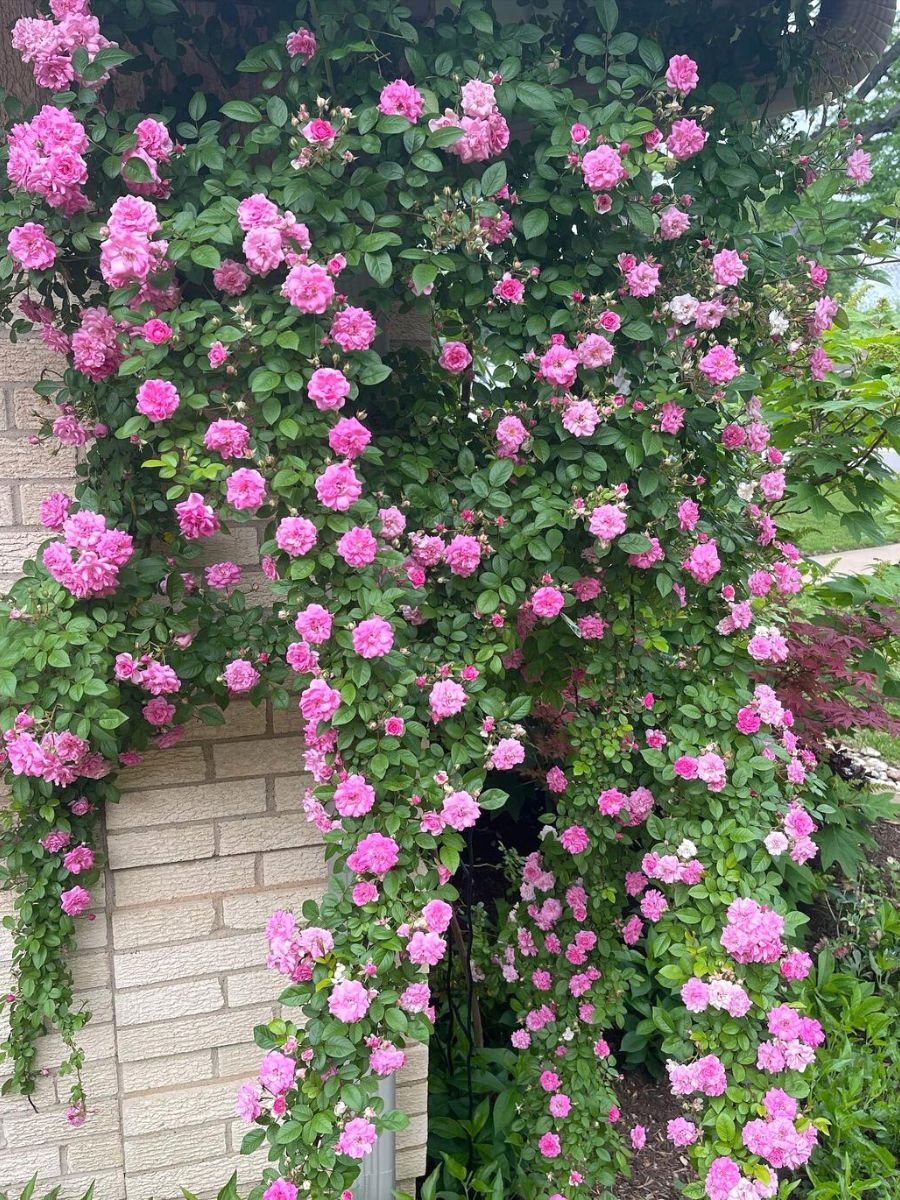
Today, the climbing Peggy Martin rose is known for its exceptional hardiness and disease resistance. It can withstand extreme weather conditions, including high heat and humidity. The Peggy Martin climbing rose produces clusters of delicate pink blooms throughout the growing season, which are both beautiful and fragrant. The flowers are semi-double, with a soft, delicate appearance that is perfect for creating a romantic, cottage-style garden.
Iceberg Climbing Rose
The Iceberg climbing rose is a popular and widely grown rose variety that is prized for its stunning beauty and ease of care. It is a climbing version of the well-known and beloved Iceberg floribunda rose.
The climbing Iceberg rose produces clusters of pure white, double blooms that are beautifully fragrant and long-lasting. The flowers have a classic rose shape and are known for their high petal count, giving them a full and luxurious appearance. They bloom profusely throughout the growing season, ensuring that your garden will be filled with color and fragrance for many months of the year.
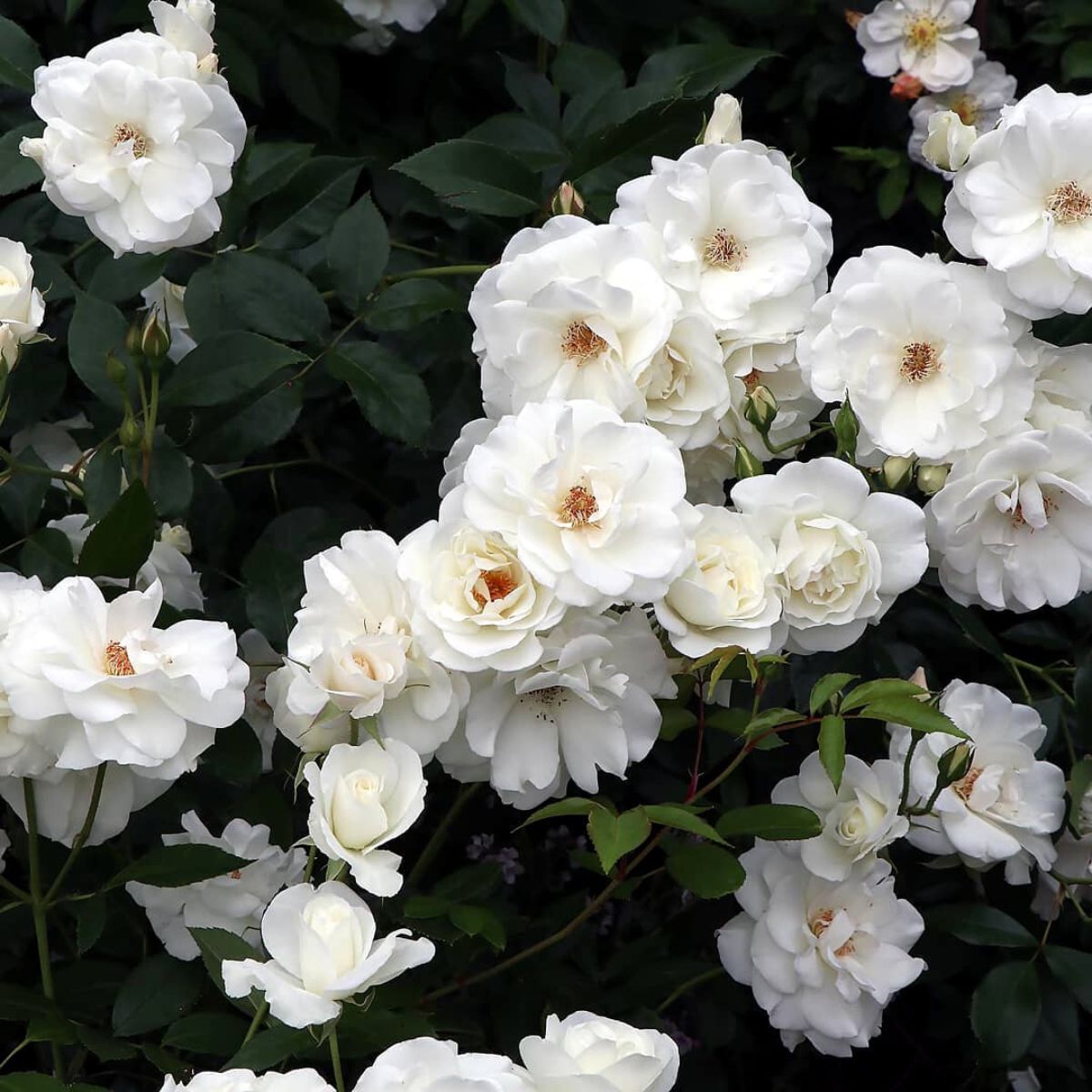
The plant is a vigorous grower that can reach heights of up to 12 feet. It has strong, flexible canes that are easy to train and can be pruned to maintain the desired shape and size. One of the eight best climbing roses to have on your patio for sure!
Lady Banks Climbing Rose
The Lady Banks climbing rose, also known as 'Rosa Banksiae', is a vigorous and hardy rose variety that is praised for its profusion of small, delicate, yellow or white blooms, making it a popular climbing rose choice.
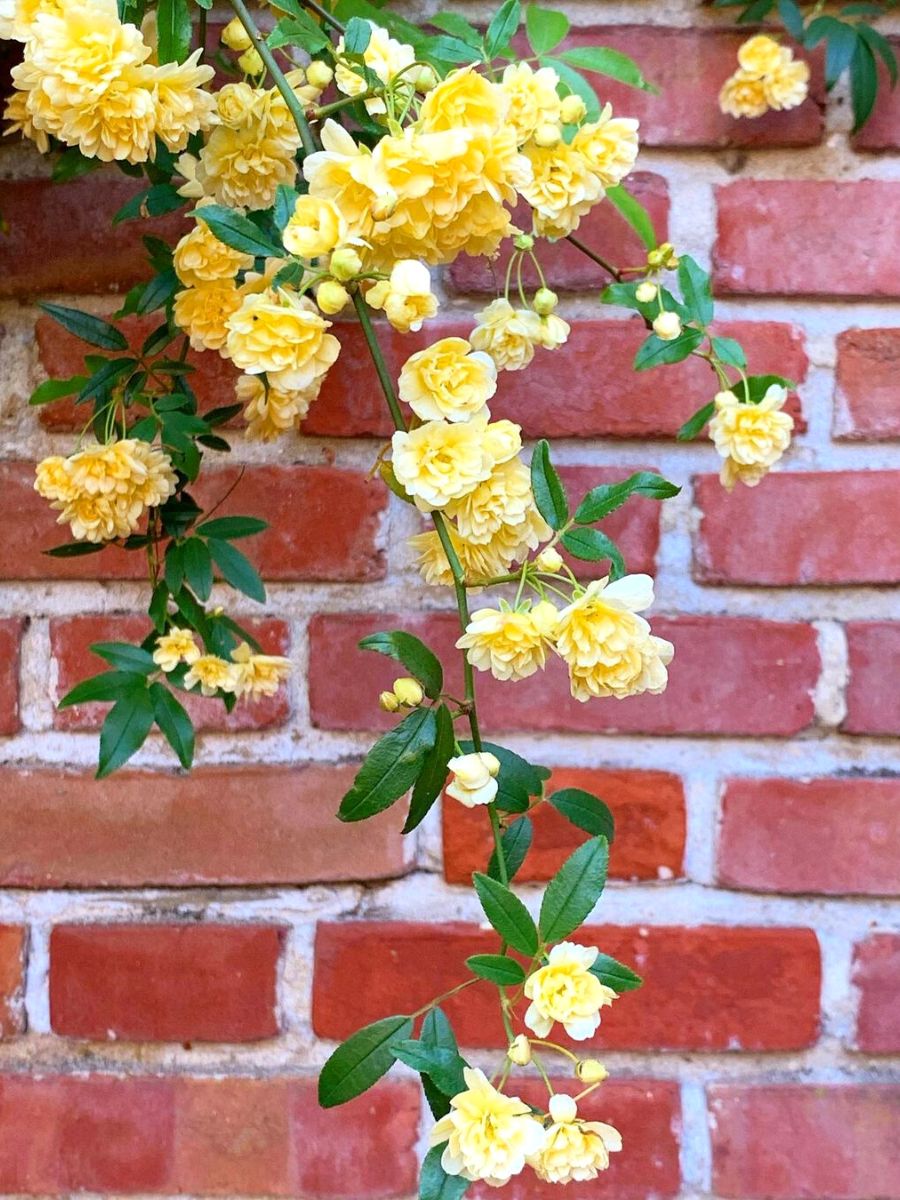
The flowers appear in clusters and are lightly fragrant, which adds even more charm to them. This rose is particularly unique for its almost thornless stems and leaves, making it a great choice for gardeners with children or pets. The climbing Lady Banks rose is also very low-maintenance, disease-resistant, and can grow up to 20 feet tall, a perfect choice for creating a dramatic, vertical accent in your garden.
Zephirine Drouhin Climbing Rose
The Zephirine Drouhin climbing rose is a beautiful and highly fragrant climbing rose that is known for its deep pink blooms and thornless canes. It was first introduced in France in 1868 and has since become a popular choice among gardeners around the world. It produces large, semi-double blooms that are intensely fragrant, making it a favorite among those who love scented roses. The flowers appear in clusters on the plant's long, arching canes, which can reach heights of up to 12 feet.
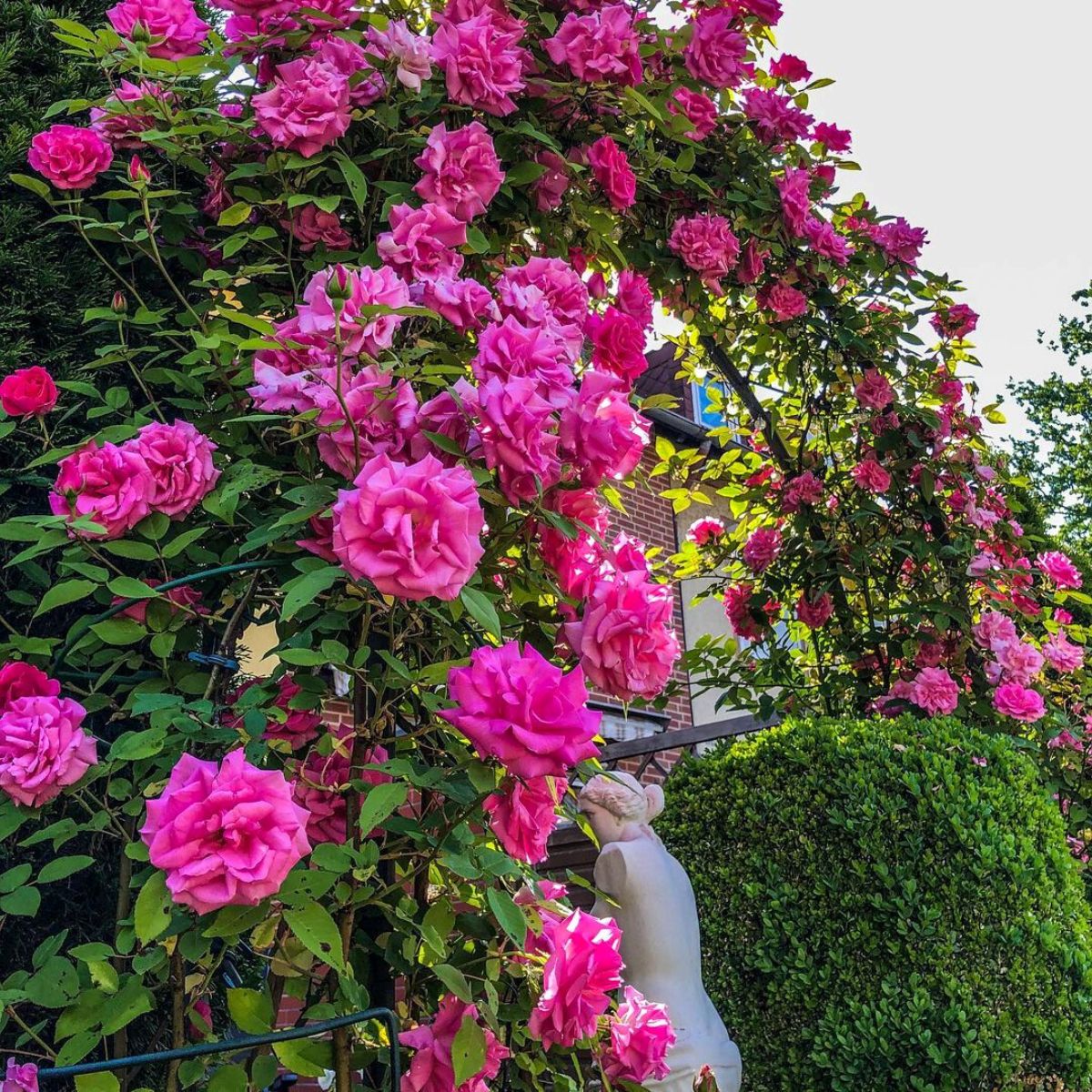
One of the most unique features of the Zephirine Drouhin climbing rose is its thornless canes. This makes it a great choice for gardeners who want a beautiful and fragrant climbing rose without the hassle of dealing with thorns. Now continuing digging into the climber roses' world, you're about to know what the best climbing rose trellis.
What Is the Best Trellis for Climbing Roses?
Choosing the best trellis for a climbing rose depends on several factors, including the growth habit of the rose, the location where it will be planted, and the overall aesthetic you are trying to achieve in your garden. Here are a few options to consider:
- A fan trellis is a simple, classic design that works well for climbing roses with a more upright growth habit. It consists of a series of horizontal and vertical bars that create a grid-like pattern, allowing the rose to climb up the structure.
- An arched trellis is a beautiful option for climbing roses that have a more arching, spreading growth habit. The arching structure of the trellis complements the natural shape of the rose, creating a graceful and elegant display.
- An obelisk trellis is a vertical structure that tapers toward the top, resembling a pyramid. This climbing rose trellis is ideal for roses that have a more compact growth habit, as it allows the rose to climb up the structure and creates a stunning vertical display in the garden.
- A pergola trellis is a more substantial structure that consists of several horizontal beams supported by vertical posts. This trellis works well for larger climbing roses, as it provides plenty of space for the rose to grow and spread out.
When choosing a trellis for your climbing rose, it is essential to consider the size of the rose and its growth habits. You also want to make sure that the trellis is sturdy and secure, as climbing roses can become quite heavy once they start to grow. Additionally, you may want to consider the overall design and style of your garden and choose a trellis that complements the existing decor. With these factors in mind, you can select the best trellis for your climbing rose and create a beautiful, thriving display in your garden.
How to Care for Climbing Roses?
Climbing roses are beautiful plants that can add height, structure, and color to any garden. Here are some tips on how to care for and how to grow climbing roses:
- To grow and take care of these roses appropriately, you must remember climbing roses require at least six hours of direct sunlight each day, so choose a location that gets plenty of sun. Also remember that the best soil for climbing roses is a well-drained soil that is rich in organic matter.
- When planting climbing roses, dig a hole that is slightly larger than the root ball of the plant. Mix some compost or well-rotted manure into the soil to improve its quality. Position the plant in the hole so that the graft union (the swollen area on the stem where the rose was grafted onto the rootstock) is about two inches below the soil surface. Backfill the hole with soil, and water thoroughly.
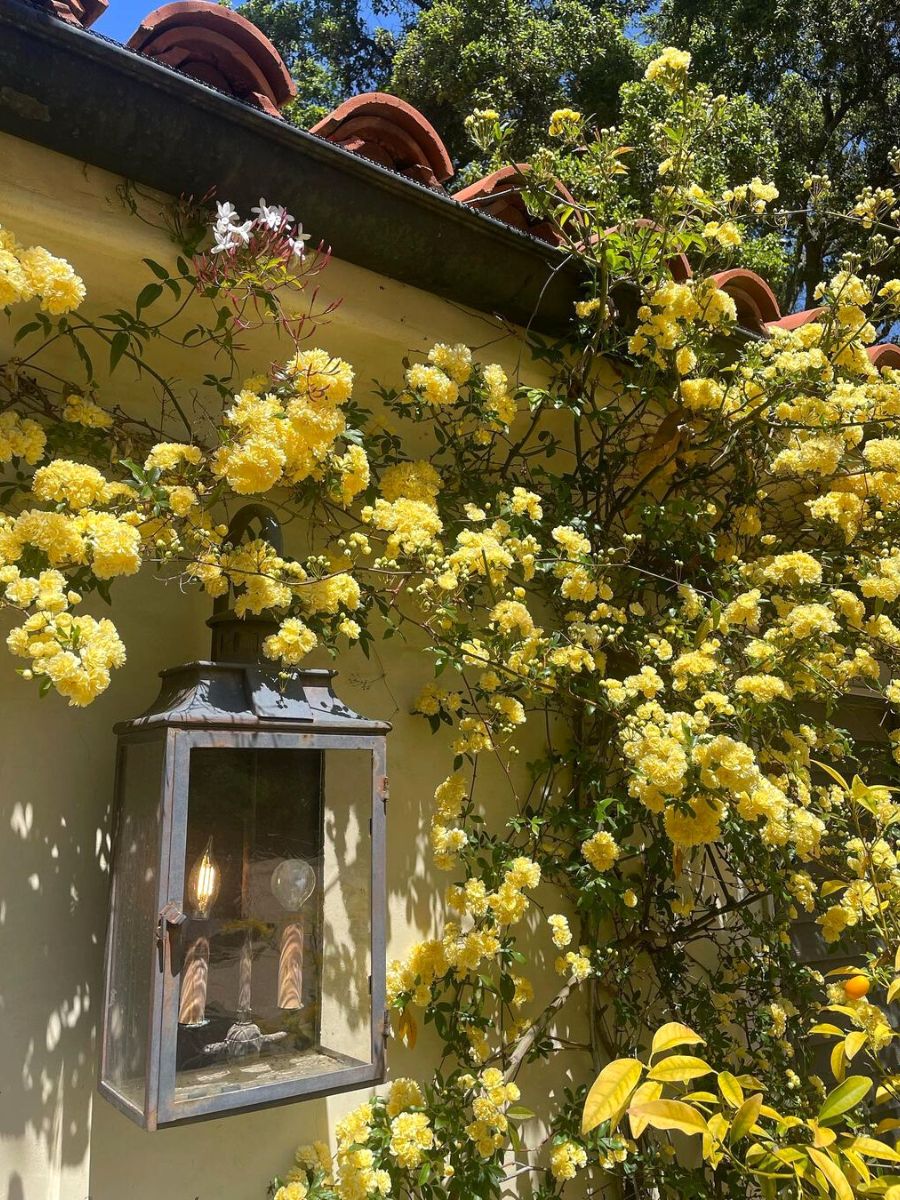
- Climbing roses need regular watering, especially during hot, dry weather. Water deeply at least once a week, making sure the soil is moist but not waterlogged. Avoid overhead watering, as this can encourage fungal diseases.
- Feed climbing roses in early spring with a balanced fertilizer that is rich in nitrogen, phosphorus, and potassium. Repeat the application every six to eight weeks during the growing season.
- Climbing roses need a sturdy support structure to climb on. Choose a trellis, arbor, or other structure that is strong enough to support the weight of the plant. Train the canes to grow up and along the support structure, tying them in place as needed.
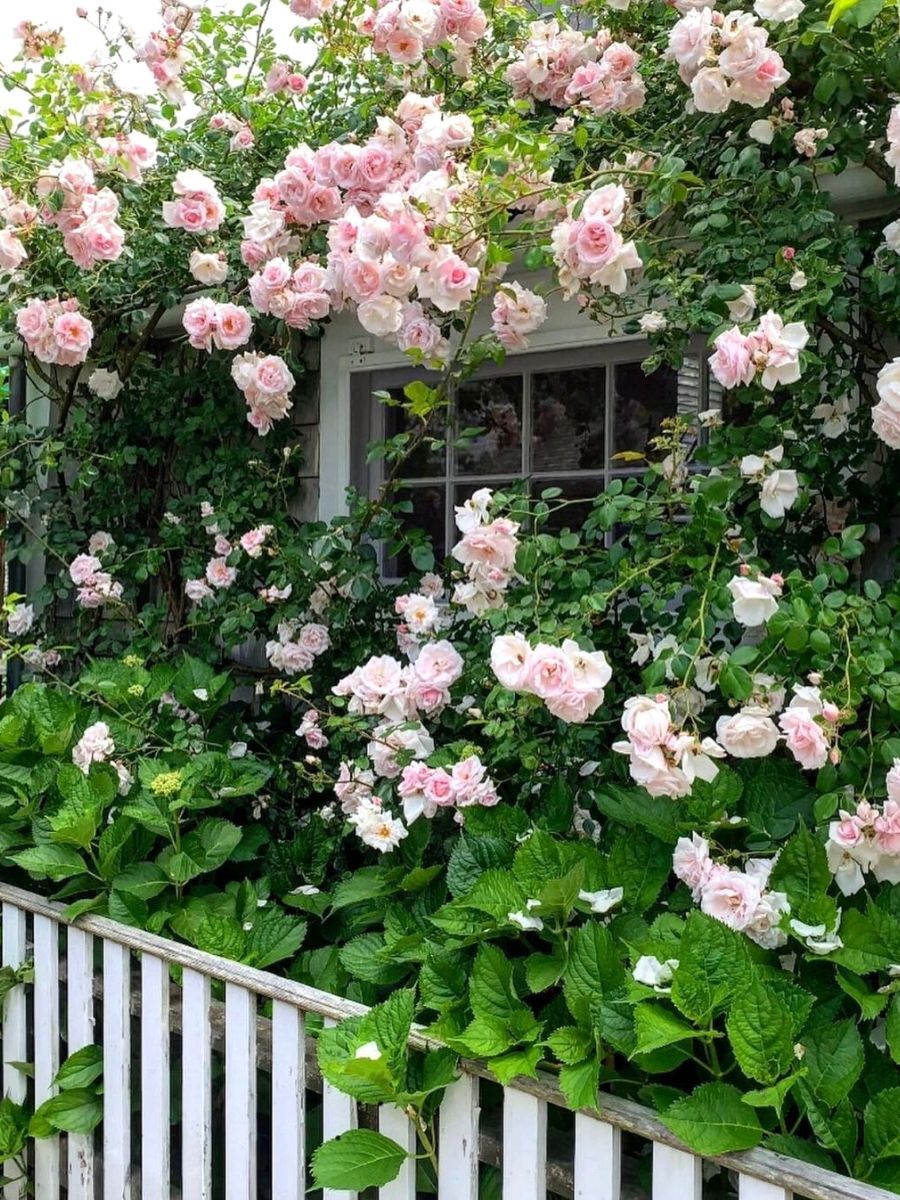
- Keep an eye out for common rose pests such as aphids, thrips, and spider mites, and treat them promptly with insecticidal soap or neem oil. Monitor the plant for signs of fungal diseases such as black spots, powdery mildew, and rust, and treat them with fungicides if necessary.
How to Prune Climbing Roses?
Pruning climbing roses is essential to maintain their shape, promote healthy growth, and encourage abundant blooms. Here are the basic steps to prune climbing roses:
- Prune in late winter or early spring before new growth appears.
- Remove any dead, damaged, or diseased wood, as well as any canes that are crossing or rubbing against each other.
- Thin out some of the older, thicker canes to encourage new growth.
- Tie the remaining canes to the support structure, and trim back any side shoots to about three buds.
- Remove any weak, spindly growth and suckers that arise from the rootstock.
- Aim to maintain an open, airy structure that allows plenty of light and air to reach the center of the plant.
- Use sharp, clean pruning tools to make clean cuts and minimize damage to the plant.
By following these simple steps, you can prune your climbing roses effectively and enjoy healthy growth and abundant blooms.
Why Having Climbing Roses in Your Garden Is a Must
Climbing roses are a stunning addition to any garden, adding both height and color to your landscape. These beautiful plants can transform your garden into a charming and romantic paradise, making your outdoor space more beautiful than ever before. Here are some reasons why having climbing roses in your garden is a must:
- They add vertical interest: Unlike traditional roses that grow as bushes, climbing roses can grow on trellises, arches, walls, and fences, adding height to your garden. By doing so, they add a sense of depth and interest to your landscape that is otherwise impossible to achieve with ground-level plants. This also means that climbing roses can be used to cover unsightly walls or fences, effectively camouflaging them and making your garden look more pleasing to the eye.
- They provide color: Climbing roses come in a wide range of colors, from soft pastels or classic red and pink to more vibrant and unnusual shades of orange, yellow, and even blue. This means that you can choose the color of climbing rose that best complements your garden's color scheme, adding a pop of color to your outdoor space that is both striking and beautiful. The different shades of climbing roses can be used to create a stunning rainbow of colors, adding vibrancy and life to your garden.
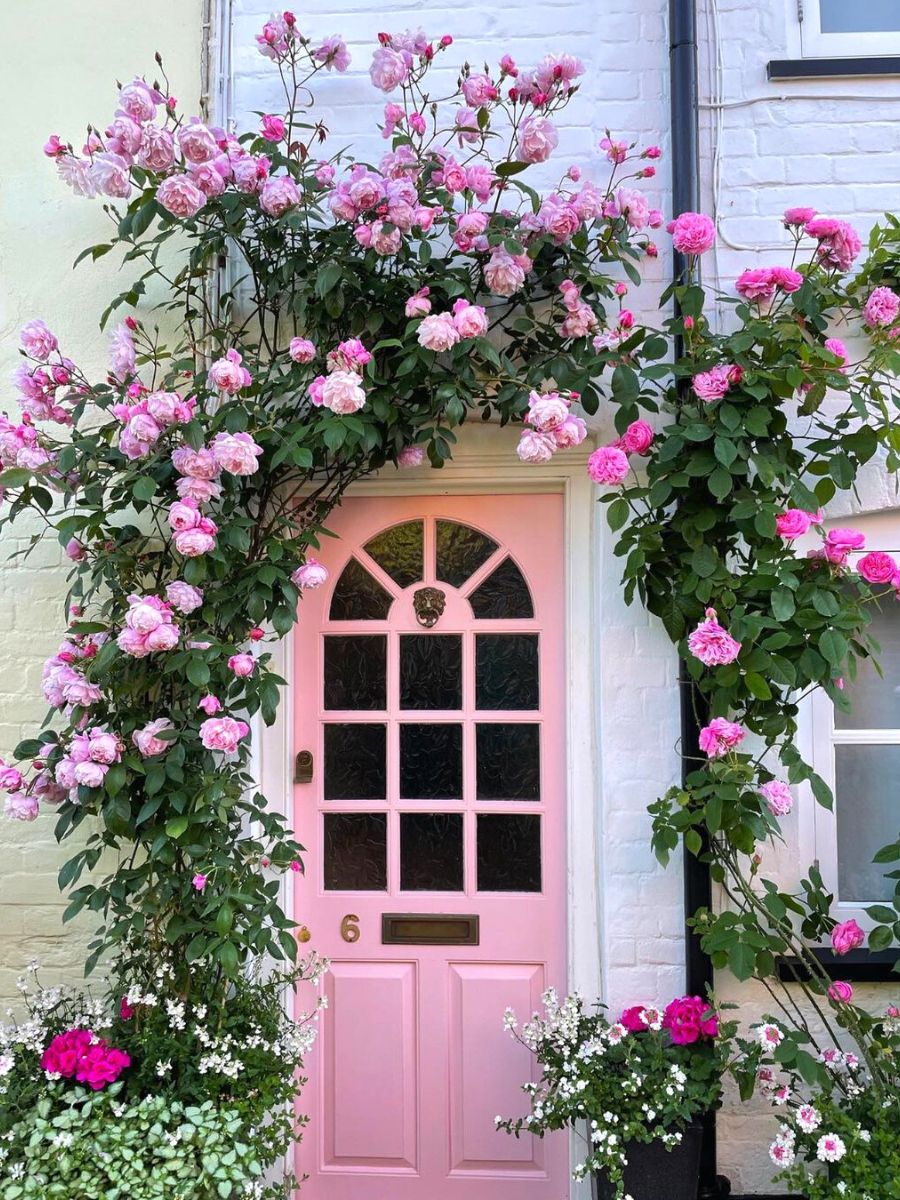
- Climbing roses provide fragance: Climbing roses are also incredibly fragrant, filling your garden with a beautiful scent that can be enjoyed from afar. This fragrance can attract bees and other pollinators, helping to promote a healthy and thriving ecosystem in your garden. Additionally, the scent of climbing roses can also help to create a relaxing and calming environment, making your garden the perfect place to unwind after a long day.
- They are incredibly versatile: Climbing roses can be trained to grow in a variety of shapes, such as arches, obelisks, and pyramids, allowing you to create a garden that is unique and distinctive. This versatility means that climbing roses can be used in a range of garden styles, from formal and traditional to more contemporary and modern. Whether you're looking to create a romantic cottage garden or a sleek and minimalist outdoor space, climbing roses can be adapted to suit your needs.
- They are low maintenance: Once established, climbing roses are relatively easy to care for. They require regular pruning and feeding, but they are generally disease-resistant and can thrive in a variety of growing conditions.
- They attract pollinators: Climbing roses are known to attract bees and butterflies, which are essential pollinators for many flowering plants. By adding climbing roses to your garden, you can create a more diverse and ecologically sound environment.
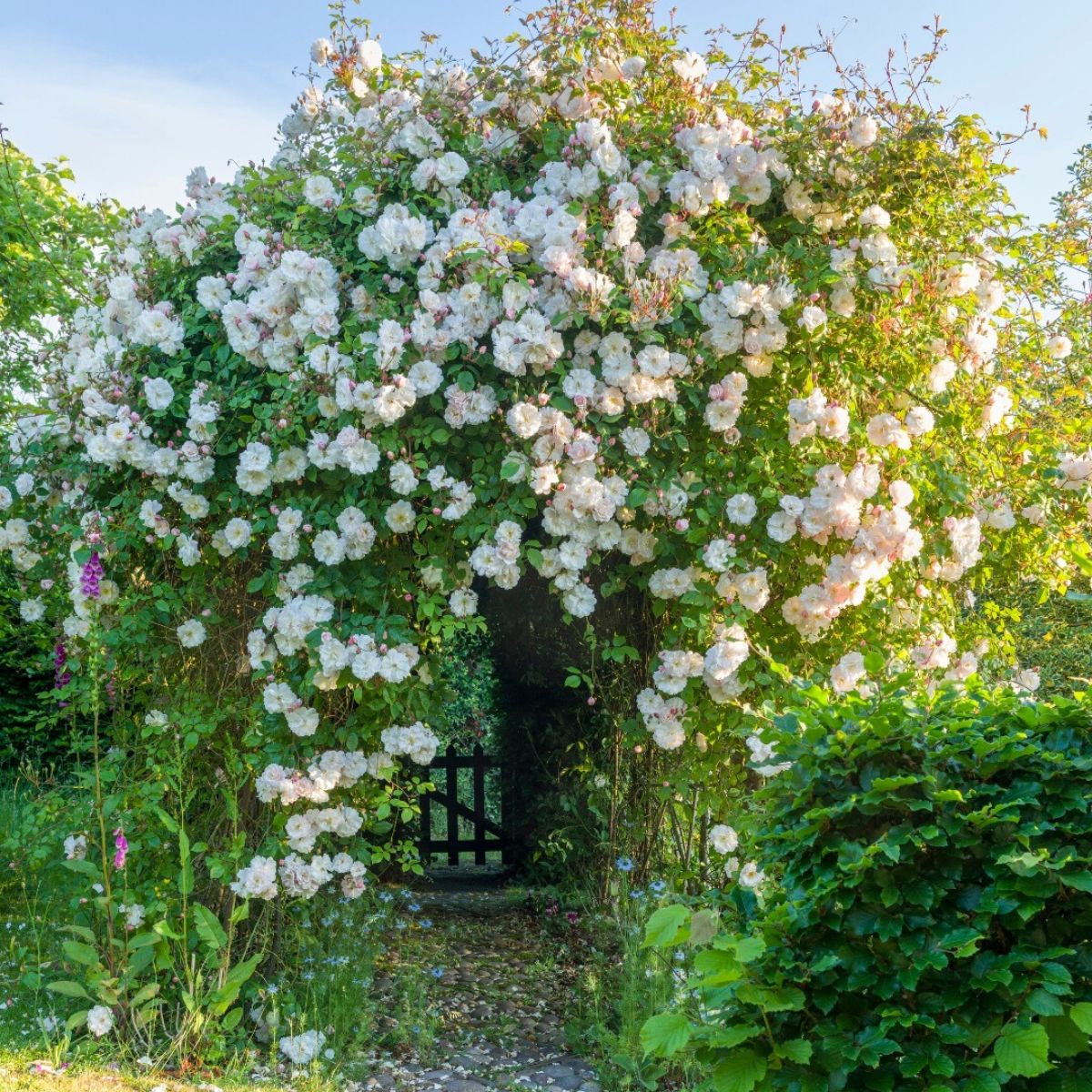
Which of these climbing roses will you add to enrich and glamorize your garden? Remember, climbing roses will always make any space look triple as beautiful.

